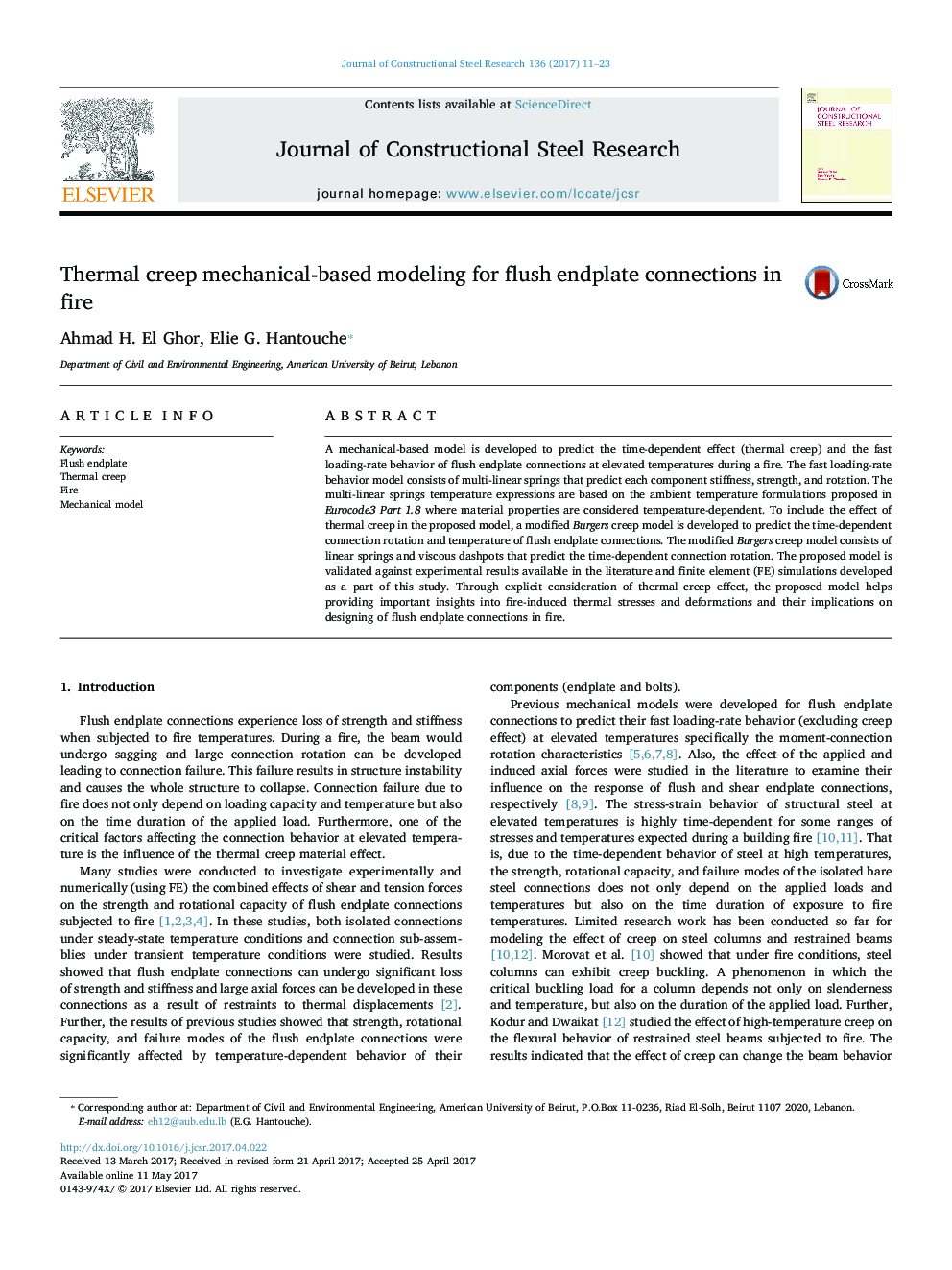| Article ID | Journal | Published Year | Pages | File Type |
|---|---|---|---|---|
| 4923275 | Journal of Constructional Steel Research | 2017 | 13 Pages |
â¢Steady-state temperature FE analyses are evaluated against experimental data at elevated temperatures.â¢Steady state creep FE analyses predicted the thermal creep response of flush endplates at fire temperature.â¢A mechanical-based model is developed to predict the creep behavior of flush endplates connection in fire.â¢A set of data is provide to account for the creep thermal stresses and deformations in designing flush endlplates in fire.
A mechanical-based model is developed to predict the time-dependent effect (thermal creep) and the fast loading-rate behavior of flush endplate connections at elevated temperatures during a fire. The fast loading-rate behavior model consists of multi-linear springs that predict each component stiffness, strength, and rotation. The multi-linear springs temperature expressions are based on the ambient temperature formulations proposed in Eurocode3 Part 1.8 where material properties are considered temperature-dependent. To include the effect of thermal creep in the proposed model, a modified Burgers creep model is developed to predict the time-dependent connection rotation and temperature of flush endplate connections. The modified Burgers creep model consists of linear springs and viscous dashpots that predict the time-dependent connection rotation. The proposed model is validated against experimental results available in the literature and finite element (FE) simulations developed as a part of this study. Through explicit consideration of thermal creep effect, the proposed model helps providing important insights into fire-induced thermal stresses and deformations and their implications on designing of flush endplate connections in fire.
